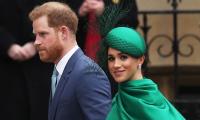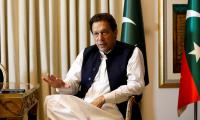LAHORE: Informal trade in Pakistan is not limited to local merchandise only as a major chunk comes through smuggled goods that include electronics, home appliances, and clothing from other countries as well as India.
In fact even at the peak of Indian formal imports into Pakistan their quantum was 8-10 times lower than goods marketed informally. Now that the trade with India has dwindled to a tickle the ratio of informally imported Indian goods has sharply increased. The Indian government or for that matter other countries from where the goods are smuggled into Pakistan have no issue with such trade. In fact smuggled goods save these governments the refunds and duty drawbacks that they have to give on formal trade. Since these goods are manufactured in those countries by the formal sectors they get the duties and taxes from them in their countries and their economies flourish.
On the other hand, the smuggled goods deprive Pakistani manufacturers of a level-playing field. These industries pay all local taxes and government levies while smugglers pay nothing and sell their products below the prices of similar local products. Smuggling also nullifies the protective duties the government imposes on imported goods as the smugglers pay no duties at all.
Smugglers capture the market of Pakistani industries and many of them are forced to pack up. One glaring example in this regard is the tyre industry. Local tyre manufacturers for instance operate at 60-80 percent of their installed capacities.
The demand for different types of tyres is more than double the capacities of the local tyre industry. Only a fraction of that demand is fulfilled through formal imports (that too on heavily under-invoiced value). Bulks of the local tyre needs are met through smuggled tyres. The smugglers are so well-entrenched in this sector that when the government abolished import duty on bus and truck tyres even then the formal importers failed to sell their tyres (importers including the largest tyre manufacturer in the country).
The formal importers imported these tyres at zero duty but they paid the sales tax of 15 percent (ST rate at that time. It is higher now). The smugglers exploited that 15 percent advantage. This exercise clearly proved the smuggling cannot be curbed by reducing duties and government levies. There has to be strict vigilance at borders, retail, and wholesale outlets where the smuggled goods are openly sold.
Pakistani manufacturers say as long as Indians have easy access to Pakistani markets through informal trade its government would not be serious in removing the non-trade barriers on Pakistani exports. Indian borders are not as porous as the Pakistan-Afghan border which substantially limits informal entry of Pakistani products in India. If informal trade is effectively checked it would push the Indians to remove non-tariff barriers to provide a level-playing field to Pakistani products so that the Indian goods could be formally exported to Pakistan.
Fruits and vegetables, textiles, automobile parts, tyres, crockery jewellery, cosmetics, medicines, tobacco, herbal products and spices and herbs reach Pakistan through informal trade without paying any government duties.
Major routes through which these goods reach Pakistan are India to Dubai to Iran (Bandar Abbas then to Afghanistan (Kandhar to Chamman and finally to Karachi). Another route used is India to Dubai to Iran to Afghanistan (Kabul) to Torkhum/bara then to Lahore and Rawalpindi. The third route used by smugglers is India to Iran (Bandar Abbas) to Torkhum/bara and then to Lahore and Rawalpindi.
The fourth route is from India to Afghanistan to Peshawar (Afghan Transit Trade). Minor informal trade also occurs through Chakothi border and Rohri near Bhawalpur while some qusai formal trade is also conducted through Dubai.
The largest informal trade is of some Indian textile products like sarees, bridal dresses, and fancy suits. Textile products come informally into Pakistan from Gurdaspur through khepias (those who visit India specifically for smuggling purposes; the visits are currently reduced) and frequent family travellers. Some goods enter the country through qusai-formally through Dubai. The destination of most of these groups is Karachi.
Automobiles enter informally in Pakistani markets through Dubai-Iran-Afghanistan-Chamman/Torkhum or via ATT or Iran-Balochistan-Karachi route. High-grade artificial jewellery is brought informally from India by khepias, family travellers via Dubai or ATT. The imported jewellery includes bridal sets, bangles and lockets. All smuggled medicines reach Pakistan through India-Afghanistan Peshawar route.
The drugs include aspirin, Amoxicillin, ampicillin, cimetidine, bromazepam, co-trimoxazole, famotidine, ciprofloxacin and ranitidine. Tobacco items include betel leaf which ends up in paan mandi Lahore, ghutka, whose final destination is Nanak Wara and Kharadar in Karachi.
Former FBR (Federal Board of Revenue) chairman Shabbar Zaidi identified smuggling as a major hurdle for the economy. These routes and the way the smugglers operate are known to the authorities but vested interests are too powerful to be confronted.
Honda officials posing for a photgraph. —APP/FileKARACHI: Honda Atlas Cars Pakistan Ltd has achieved a major...
SOS children village's children showing bags donated by Emirates International Airlines. — Emirates...
Automobiles at the shipping terminal are shown from the view of a drone in San Diego, California, US, March 26, 2025....
Key challenge lies in whether the ruling elite is willing to implement changes that could weaken their grip on power
A woman holds a smartphone displaying the logo of social network X . — AFP/FileElon Musk said his xAI artificial...
A representational image of a person using his cellphone for a digital transaction. — Unsplash/FileKARACHI: Chief...







